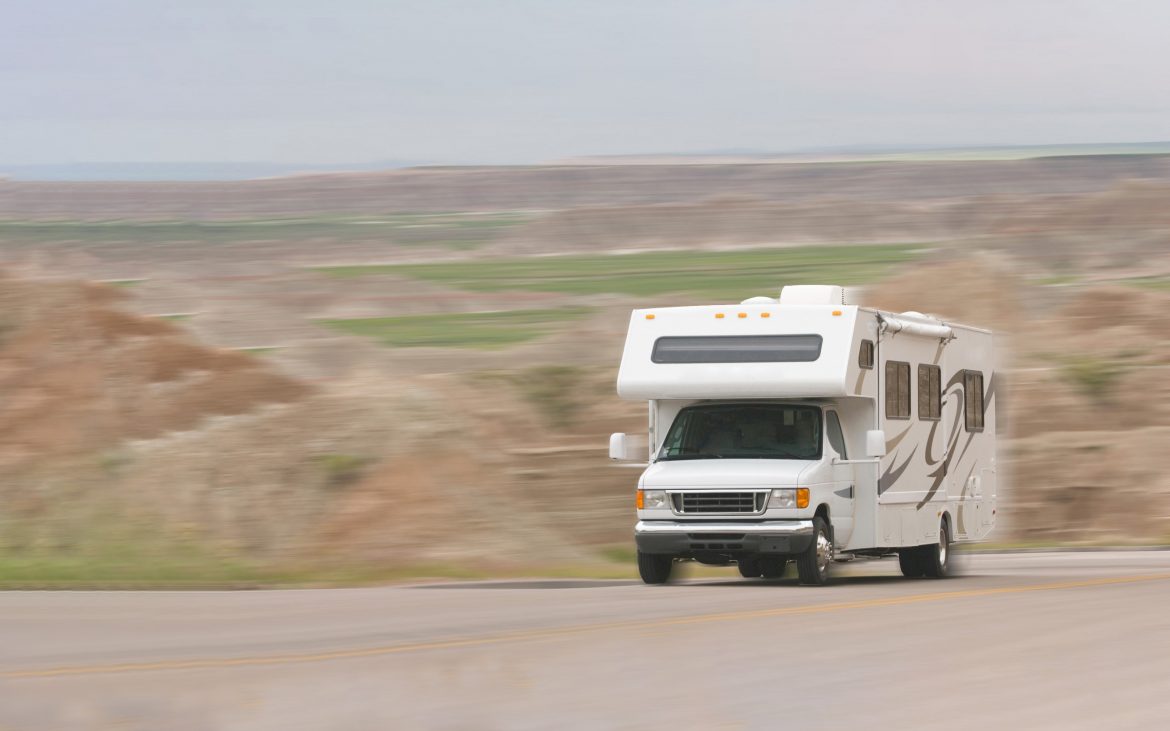Fuel prices are a hot topic among recreational vehicle owners throughout North America. At the campground and online, it’s not uncommon for RVers to share their concerns about the costs at the pump. However, all the talking and social media posting has done little to help to curb the increase of pump prices. So how do you manage these climbing costs? The most effective, and maybe the only way, is to reduce fuel consumption during your RV travels. This, pure and simple, boils down to increasing the MPG (miles per gallon) of your vehicle.
Photo courtesy of Peter Mercer
Before we get started, let’s forget all the hype surrounding those hocus pocus fuel additives, miracle fuel-saving in-line filters and those hard-to-believe gas-saving devices. Turns out, there are many simple, common-sense things you can do to achieve better fuel mileage in your motorhome or tow vehicle/trailer combination.
Go Slow, Save More
First, we have all heard over the years that driving slower reduces fuel consumption. Well, believe it or not, it still works! Reducing your speed by 10% will show a marked improvement at the fuel pump. Of course, cutting your speed even more would yield even better results. But such actions must not be at the expense of negatively affecting traffic flow behind. With that in mind, the 10% reduction should be beneficial for both saving fuel and not impeding traffic flow.
Let Tires Roll to the Rescue
Maintaining proper tire inflation reduces the rolling resistance of the wheels. When your tires are underinflated, they rotate with a resistance similar to driving in sand. As tires naturally lose air pressure over time, it is imperative that they are regularly checked and, if necessary, topped up.
Getty Images
Put Your RV on a Diet
Automobile and truck manufacturers are constantly developing ways to make lighter vehicles to enhance their performance and reduce the energy needed to move them. Taking a page from their book, you need to put your RV on a diet. It may be high time you went through your onboard inventory and related equipment. Pull everything out of the lockers, basements and any other storage spaces. If you are like many, you will come across items you rarely or never use. Things like trailer hitches, folding tables, excessive or duplicate tools, horseshoe sets, empty Jerry cans, extra floor tiles, bags of tent pegs, etc., etc. Leave only what you are going to use during this particular trip and store the rest elsewhere.
Be Fastidious About Fuel
Getty Images
Continuing on reducing your RV’s weight by limiting your fuel. Fill your fuel tank with only enough to reach your destination plus an additional amount to cover both error and enough to get you to an alternate nearby location.
Don’t Gain Water Weight
You’d be surprised how much water weighs. With this in mind, consider traveling with a minimum of freshwater. Perhaps just adequate to flush the head for the duration of your trip. This, of course, is based on knowing a water supply awaits at the destination.
Take Advantage of Your Transmission Features
If your RV includes an Allison transmission that has an economy mode, use it. This mode alters the shift mapping to upshift earlier and delays deceleration downshifts. Some Allison models default to this mode requiring no action by the user.
Getty Images
Don’t Be a Leadfoot
When pulling away from a stop, accelerate at a steady rate. This will prevent excess fuel burn caused by rapid acceleration and allow earlier transmission upshifts.
Save Tailgating for the Stadium, Not the Road
While traveling with other traffic, do not tailgate the vehicle ahead. The habit of following too closely is a dangerous practice, but it also contributes to fuel wasting. When people drive, their speed varies or at least fails to match the one ahead. Generally, the constant traffic spacing variation causes vehicles to apply their brakes from time to time. This braking bleeds off the energy that has been created by the vehicle’s motor. Now the RV must once again produce that energy. Reduce fuel consumption by avoiding this.
Getty Images
Track Fuel Consumption
Reset and track your fuel consumption on your vehicle’s fuel performance display. If your unit is not equipped with one, consider adding one. Aftermarket systems are reasonably priced and work well. Tracking your fuel performance is very informative. It promotes driving behavior that supports more fuel-efficient operation.
Well, these are just 9 simple tips to help increase your fuel mileage. Following them all may increase your fuel mileage by as much as 10% to 20%. Below is a summary recapping each point:
- Reduce driving speeds by 10%.
- Check and correct tire inflation.
- Lighten your RV by removing unneeded items.
- Run lighter by traveling with only needed fuel for trip.
- Run lighter by limiting freshwater to a minimum.
- Allison transmission ran in “Econo” if applicable.
- Accelerate at a moderate rate.
- Do not tailgate or follow too closely.
- Use and monitor a fuel performance readout computer.
There is an additional approach to stretch your fuel dollar that is not about making a gallon go further but rather reducing the cost per gallon. With a Good Sam Membership, you save 5 cents per gallon on gasoline or 8 cents per gallon of diesel fuel in the United States at Pilot Flying J locations. In Canada, travelers can save 1 cent per liter of both gas and diesel fuel.
Also, searching online for the lowest-price fuel in your area can further aid in staying within your budget.
So, let’s keep the fuel companies honest. Burning a little less to reduce fuel consumption contributes to reduced demand. Paying a little less by shopping for the best price supports competitive pricing.
Peter Mercer — With Fuel For Thought!
